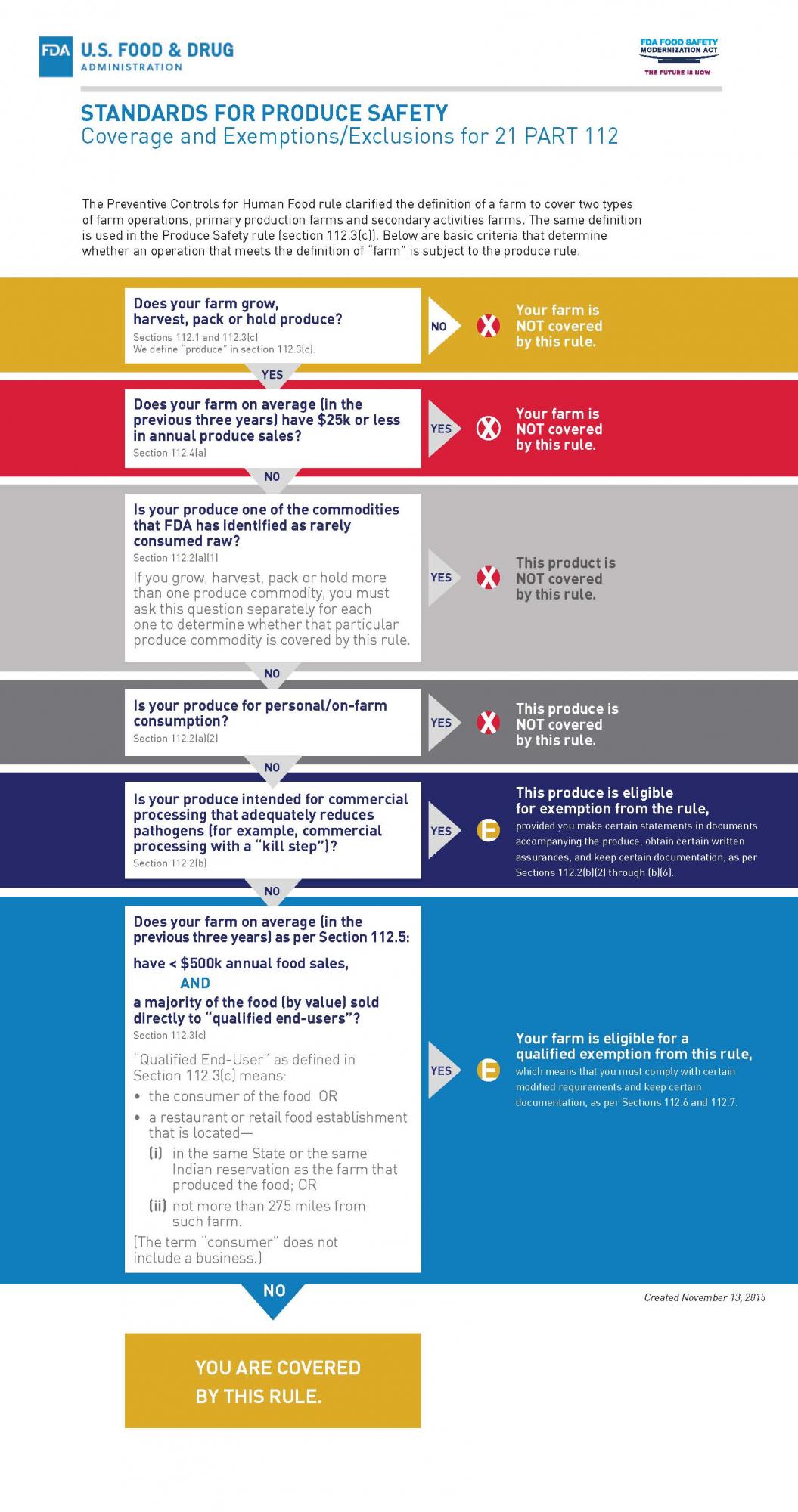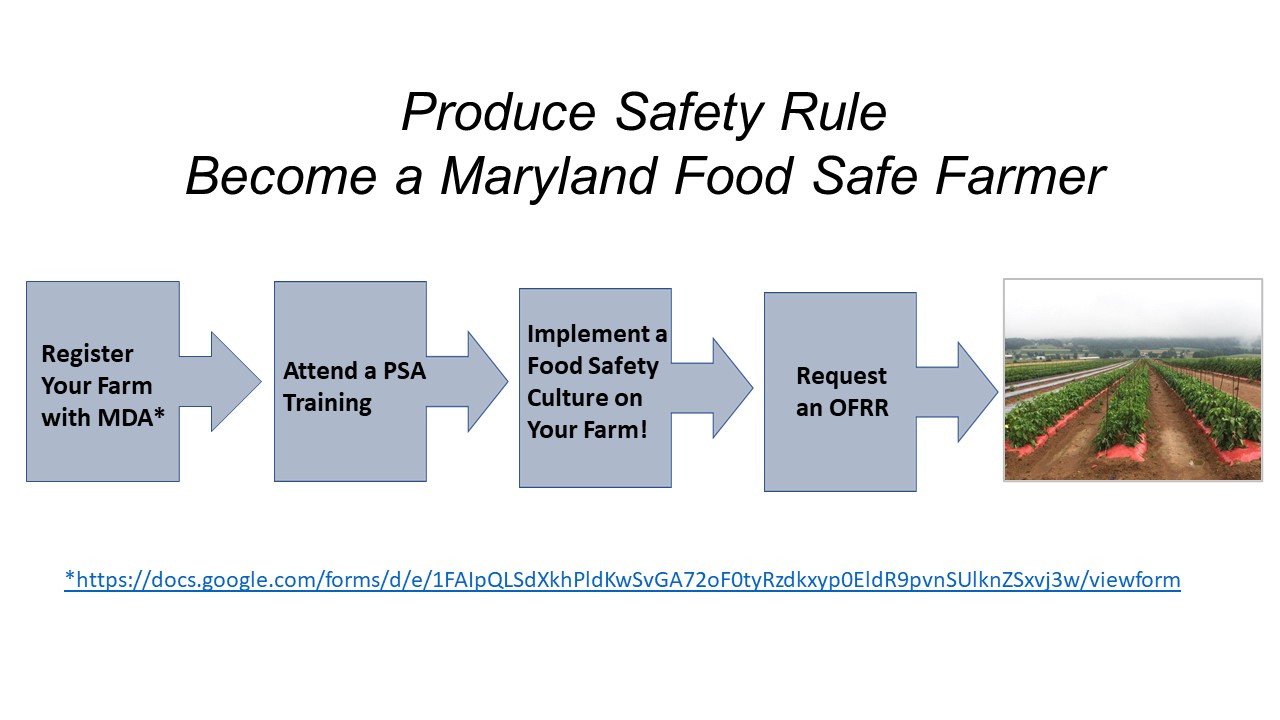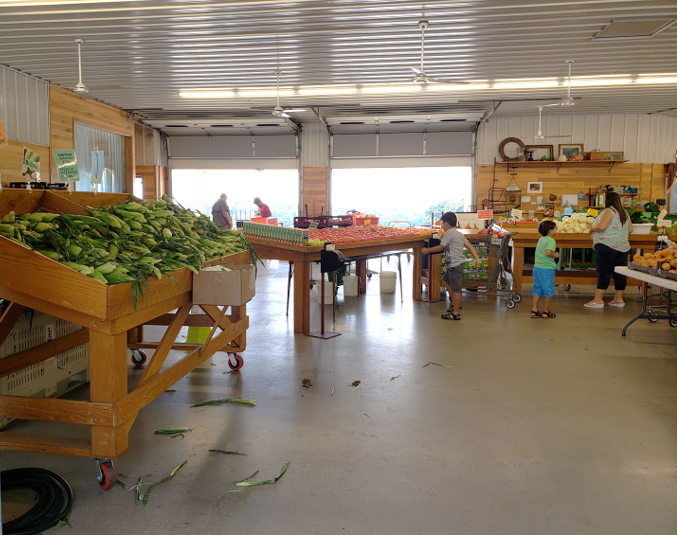I’m a PYO Fruit Grower….
I’m a Vegetable Farmer with a CSA………
I’m a Mostly Wholesale Grower with a Farm Stand….
I Raise Beef Cattle and Grow Vegetables for Our Family….
I Am Already GAP Certified, Does the Produce Safety Rule Affect Me?
The Produce Safety Rule (PSR) section of the U.S. Food Safety Modernization Act (FSMA) is aimed at reducing the risk of human exposure to microbial pathogens when fresh fruits and vegetables are consumed raw. Most all fruits and vegetables that are generally eaten raw are covered. *
The Produce Safety Rule is a mandatory federal regulation that is implemented based on the amount of produce sold and to whom. (CFR Code here: https://www.accessdata.fda.gov/scripts/cdrh/cfdocs/cfCFR/CFRSearch.cfm?CFRPart=112)
You are exempt if you sold less than an average of $28,561 (adjusted for inflation as of April 2021) in covered and non-covered produce over the previous three-year period.
You are required to comply to the rule if you sold over an average of $571,214 (adjusted for inflation as of April 2021) in produce sales per year in the last three year period.
It is the middle area – the qualified exempt status that gets complicated. A qualified exempt producer will meet the following criteria:
-
your average total food* sales were less than $571,214.
-
A lot will depend on what percentage of your food* sales were to “qualified end users”. So who is a qualified end user?
-
1. Your PYO and farm market customers
-
2. Restaurants and retail food stores in the same state and less than 275 miles away, and they sell directly to the consumer.
-
-
More than half (50.1%) of the value of the total food* sold went to the aforementioned qualified end users.
*For this calculation, grains, animal feeds, poultry, livestock, etc. are included
___________________________________________________________________________________________________

___________________________________________________________________________________________________
This chart will help you determine if you are covered by the Produce Safety Rule (note dollar values are not adjusted for inflation)
If you find that you fall into either the qualified exempt or required compliance categories, what do you do? The first step would be to attend a Produce Safety Alliance (PSA) training on the PSR. That training will outline the compliance requirements. Though lengthy, the PSR requirements are fairly common-sense standards and procedures that you are probably already implementing on your farm and are very similar to GAPs (Good Agricultural Practices) certification requirements.
You will need at least one person on your farm who has taken the training. It is very important that the PSA trained person be in a position to update procedures and train workers in the PSR standards.
Produce Safety Rule Is Maryland Department of Agriculture Supported
Start the process by registering with the Food Quality Assurance Program here:
PDF format:https://mda.maryland.gov/foodfeedquality/Documents/FSMA/PSR%20Registration%20Form%20Current.pdf
Fillable Google document: https://docs.google.com/forms/d/e/1FAIpQLSdXkhPldKwSvGA72oF0tyRzdkxyp0EldR9pvnSUlknZSxvj3w/viewform
This information helps MDA in determining resource allocation to maximize assistance to Maryland farmers.
___________________________________________________________________________________________________

___________________________________________________________________________________________________
In Maryland we are privileged to have the Maryland Department of Agriculture overseeing PSR compliance. Inspections of the larger producers have already started, and many farms are electing to have an On Farm Readiness Review (OFRR) before an inspection. The OFRR brings three specialists to your farm: someone from MDA, someone from your local extension office, and a food safety educator from the University of Maryland. This team will go over the compliance requirements with you and look specifically at your farm’s unique situation. Even the FDA is looking at these first years as a time of education not retribution. We in the Food Safety Group have attended many OFRR’s, and the farmer feedback is that they are very helpful and give real, reasonable application to what can be a confusing set of laws. The goal is to develop a food safety culture on your farm and with your workers to help keep your customers safe.

*The following are produce commodities that FDA has identified as rarely consumed raw: asparagus; black beans, great Northern beans, kidney beans, lima beans, navy beans, and pinto beans; garden beets (roots and tops) and sugar beets; cashews; sour cherries; chickpeas; cocoa beans; coffee beans; collards; sweet corn; cranberries; dates; dill (seeds and weed); eggplants; figs; ginger; horseradish; hazelnuts; lentils; okra; peanuts; pecans; peppermint; potatoes; pumpkins; winter squash; sweet potatoes; and water chestnuts
 English
English العربية
العربية Български
Български 简体中文
简体中文 繁體中文
繁體中文 Hrvatski
Hrvatski Čeština
Čeština Dansk
Dansk Nederlands
Nederlands Suomi
Suomi Français
Français Deutsch
Deutsch Ελληνικά
Ελληνικά हिन्दी
हिन्दी Italiano
Italiano 日本語
日本語 한국어
한국어 Norsk bokmål
Norsk bokmål Polski
Polski Português
Português Română
Română Русский
Русский Español
Español Svenska
Svenska Català
Català Filipino
Filipino עִבְרִית
עִבְרִית Bahasa Indonesia
Bahasa Indonesia Latviešu valoda
Latviešu valoda Lietuvių kalba
Lietuvių kalba Српски језик
Српски језик Slovenčina
Slovenčina Slovenščina
Slovenščina Українська
Українська Tiếng Việt
Tiếng Việt Shqip
Shqip Eesti
Eesti Galego
Galego Magyar
Magyar Maltese
Maltese ไทย
ไทย Türkçe
Türkçe فارسی
فارسی Afrikaans
Afrikaans Bahasa Melayu
Bahasa Melayu Kiswahili
Kiswahili Gaeilge
Gaeilge Cymraeg
Cymraeg Беларуская мова
Беларуская мова Íslenska
Íslenska Македонски јазик
Македонски јазик יידיש
יידיש Հայերեն
Հայերեն Azərbaycan dili
Azərbaycan dili Euskara
Euskara ქართული
ქართული Kreyol ayisyen
Kreyol ayisyen اردو
اردو বাংলা
বাংলা Bosanski
Bosanski Cebuano
Cebuano Esperanto
Esperanto ગુજરાતી
ગુજરાતી Harshen Hausa
Harshen Hausa Hmong
Hmong Igbo
Igbo Basa Jawa
Basa Jawa ಕನ್ನಡ
ಕನ್ನಡ ភាសាខ្មែរ
ភាសាខ្មែរ ພາສາລາວ
ພາສາລາວ Latin
Latin Te Reo Māori
Te Reo Māori मराठी
मराठी Монгол
Монгол नेपाली
नेपाली ਪੰਜਾਬੀ
ਪੰਜਾਬੀ Afsoomaali
Afsoomaali தமிழ்
தமிழ் తెలుగు
తెలుగు Yorùbá
Yorùbá Zulu
Zulu ဗမာစာ
ဗမာစာ Chichewa
Chichewa Қазақ тілі
Қазақ тілі Malagasy
Malagasy മലയാളം
മലയാളം සිංහල
සිංහල Sesotho
Sesotho Basa Sunda
Basa Sunda Тоҷикӣ
Тоҷикӣ O‘zbekcha
O‘zbekcha አማርኛ
አማርኛ Corsu
Corsu Ōlelo Hawaiʻi
Ōlelo Hawaiʻi كوردی
كوردی Кыргызча
Кыргызча Lëtzebuergesch
Lëtzebuergesch پښتو
پښتو Samoan
Samoan Gàidhlig
Gàidhlig Shona
Shona سنڌي
سنڌي Frysk
Frysk isiXhosa
isiXhosa